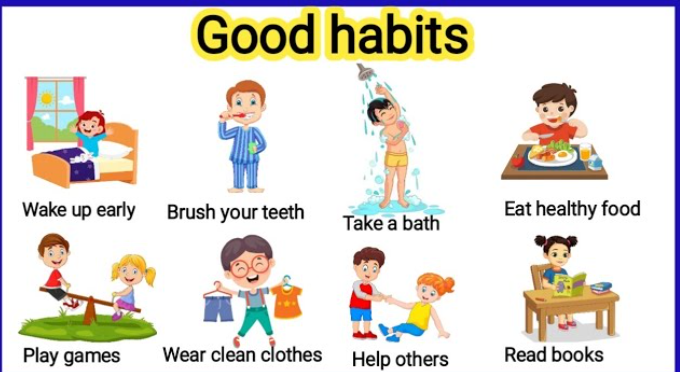GOOD HABITS- is simply dummy text of the printing and typesetting industry. Lorem Ipsum has been the industry’s standard dummy text ever since the 1500s, when an unknown printer took a galley of type and scrambled it to make a type specimen book. It has survived not only five centuries, but also the leap into electronic typesetting, remaining essentially unchanged. It was popularised in the 1960s with the release of Letraset sheets containing Lorem Ipsum passages, and more recently with desktop publishing software like Aldus PageMaker including versions of Lorem Ipsum
benefits of good habits


good habits is simply dummy text of the printing and typesetting industry. Lorem Ipsum has been the industry’s standard dummy text ever since the 1500s, when an unknown printer took a galley of type and scrambled it to make a type specimen book. It has survived not only five centuries, but also the leap into electronic typesetting, remaining essentially unchanged. It was popularised in the 1960s with the release of Letraset sheets containing Lorem Ipsum passages, and more recently with desktop publishing software like Aldus PageMaker including versions of Lorem Ipsum
When a user activates a theme, they have an expectation of seeing their photos, theirs shop, their contributors and all of their content with a new style or twist. Themes provide this ability to showcase user content in different ways. How a theme gets that content is what we look for. When there is no content a theme should not show anything. This has been an issue in the past and this will hopefully add more information to that. Sounds simple, right?
Yes and no.
What about default settings?
Brilliant question to ask because themes need to have a basic, or default, setting in order to display user content. Let’s look at a good example of this. Using a basic loop as an example:
if( have_posts() ): while( have_posts() ): // our content if there are actual posts to loop over endwhile; else: // now if there is nothing to show we can simply end it here -or- show a default message printf( __( 'There are no posts, how about creating <a href="%s">one</a>?', 'textdomain' ), esc_url( admin_url( 'post-new.php' ) ); endif;
Looks simplistic. But what if you wanted to add a message letting the user know they have nothing to show or point them in the right direction to create a post. We don’t want the entire world to know or even see that link, right? This message has to have meaning for the user and not the world to see. This is where some may get tripped up because some will want to use what we consider demo content. So what we can do is add a capability check.
What is interesting and noteworthy, is that every theme is going to have different layouts and different sidebars (positions and even sidebar names). In any event, the user will still have a fair amount of work to redo their website by rebuilding widgets (or at least re-assign them) to the new theme’s sidebars.
I’ve had demo content added to a theme (ie: sidebar content) but I have found it was important that the user has a “one-click” method to disable all demo content from the customizer. Nothing worse than to have your pages with some “lorem ipsum” showing up and not knowing how to get rid of it….even worse if it was hard coded in (nasty).
WPDevHQ7:57 am on April 1, 2016
Hear, hear!
lyrathemes6:40 pm on April 1, 2016
I agree with Shaped Pixels – sometimes users expect to see the “demo” that they saw before downloading the theme and “example” content gives them an idea of what goes where and how. If one click or checkmark can turn all that off, and those “example blocks” are kept completely separate in functions or include files – what is the harm?
Jenny Ragan9:23 pm on April 8, 2016
What about when there is a theme option such as a phone number, email address, or other contact info displayed in the header or footer? Can it have a default value such as a fake phone number or should not be displayed until the user enters their real info?
Mahesh Waghmare2:01 pm on January 14, 2017
I think It might useful if theme author use starter-content ( @since WordPress 4.7) To add demo content for a theme.
add_theme_support( 'starter-content', array( // Default content goes here ) );
Jose Castaneda10:17 am on January 16, 2017
And I would agree with that. Also keep in mind this post was also written way before that was merged to core. 🙂
link partner: shark mondo
visit on my home page: makedigiworld